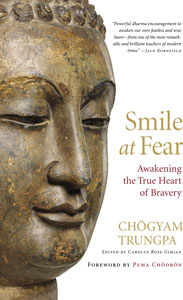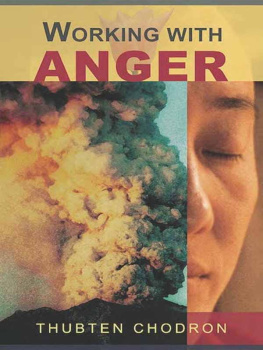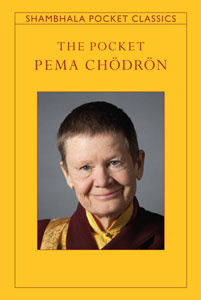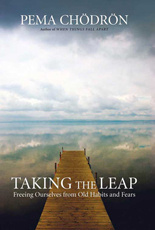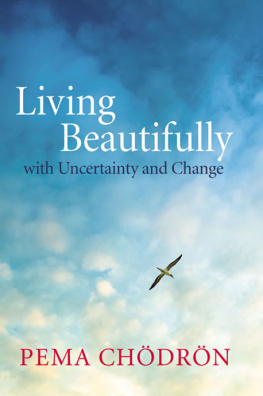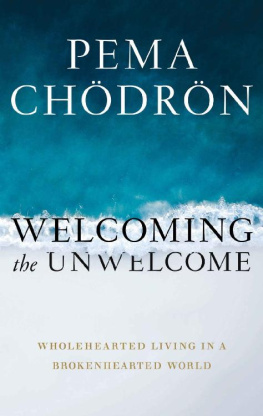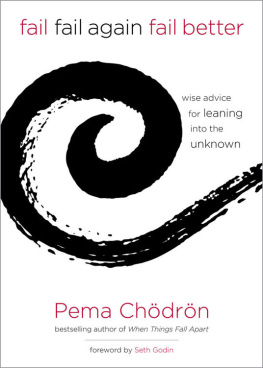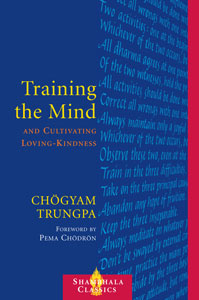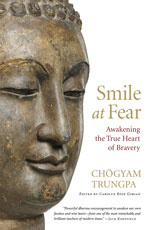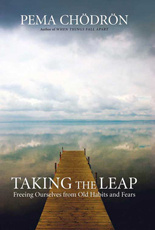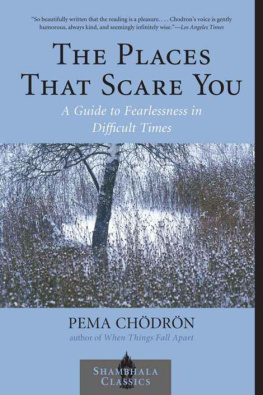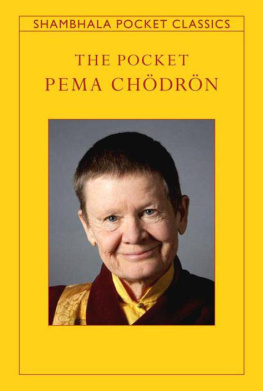Pema Chodron is one of those spiritual teachers who brings ancient wisdom to bear upon our daily triumphs and tragedies.... Incredibly wise and poignantly practical.
Spirituality & Health
Chdrns book is filled with useful advice about how Buddhism helps readers to cope with the grim realities of modern life, including fear, despair, rage and the feeling that we are not in control of our lives... Chdrn demonstrates how effective the Buddhist point of view can be in bringing order into disordered lives.
Publishers Weekly
This is a book that could serve you for a lifetime.
Natural Health
As one of Pema Chdrns grateful students, I have been learning the most pressing and necessary lesson of all: how to keep opening wider my own heart.
Alice Walker
ABOUT THE BOOK
The beautiful practicality of her teaching has made Pema Chdrn one of the most beloved of contemporary American spiritual authors among Buddhists and non-Buddhists alike. A collection of talks she gave between 1987 and 1994, the book is a treasury of wisdom for going on living when we are overcome by pain and difficulties. Chdrn discusses:
- Using painful emotions to cultivate wisdom, compassion, and courage
- Communicating so as to encourage others to open up rather than shut down
- Practices for reversing habitual patterns
- Methods for working with chaotic situations
- Ways for creating effective social action
PEMA CHDRN is an American Buddhist nun in the lineage of Chgyam Trungpa. She is resident teacher at Gampo Abbey in Nova Scotia, the first Tibetan monastery in North America established for Westerners. She is the author of many books and audiobooks, including the best-selling Taking the Leap and Dont Bite the Hook.
Sign up to receive inspirational quotes from Pema Chdrn and special offers from Shambhala Publications.

Or visit us online to sign up at shambhala.com/eheartadvice.
SHAMBHALA PUBLICATIONS, INC.
4720 Walnut Street
Boulder, Colorado 80301
www.shambhala.com
Cover art: Michael Busselle/The Image Bank/Getty Images
Cover design by Jim Zaccaria
1997 by Pema Chdrn
Afterword to the 20th Anniversary Edition 2016 by Pema Chdrn
The Sdhana of Mahmudr 1968, 1976, 1990 by Diana J. Mukpo.
Used by permission of Diana J. Mukpo and the Nalanda Translation Committee.
The authors proceeds from this book will be donated to the Pema Chdrn Foundation.
All rights reserved. No part of this book may be reproduced in any form or by any means, electronic or mechanical, including photocopying, recording, or by any information storage and retrieval system, without permission in writing from the publisher.
THE LIBRARY OF CONGRESS CATALOGUES THE PREVIOUS EDITION OF THIS BOOK AS FOLLOWS:
Chdrn, Pema.
When things fall apart: heart advice for difficult times/Pema Chdrn.
p. cm.
eISBN 978-0-8348-2100-2
ISBN 978-1-61180-343-3 (20th Anniversary Edition, paperback)
ISBN 978-1-57062-969-3 (Shambhala Library Edition)
1. Religious lifeBuddhism. I. Title.
BQ5410.C434 1997 96-9509
394-3 444dc20 CIP
To Sakyong Mipham,
with devotion, love, and gratitude
CONTENTS
ACKNOWLEDGMENTS
My sincere gratitude to Lynne Van de Bunte, who not only preserved the tapes that make up the talks in the book but also spent many hours finding the following people to transcribe them: my thanks to Heidi Utz, Rex Washburn, Ginny Davies, and Aileen and Bill Fell (who also got all the talks on one computer), and also to Lynne herself, who transcribed the tapes that were so ancient, no one else could figure out what was being said. Finally, a very special thank-you to my friend and editor Emily Hilburn Sell, who took a carton of unedited talks and transformed them into this book. Without her talent, hard work, and loving dedication, I would never have published anything. I feel fortunate that we can continue to work together.
INTRODUCTION
I N 1995 I took a sabbatical. For twelve months I essentially did nothing. It was the most spiritually inspiring time of my life. Pretty much all I did was relax. I read and hiked and slept. I cooked and ate, meditated and wrote. I had no schedule, no agenda, and no shoulds. A lot got digested during this completely open, uncharted time. For one thing, I began to read slowly through two cardboard boxes of very raw, unedited transcriptions of talks I had given from 1987 to 1994. Unlike the dathun talks that make up The Wisdom of No Escape and the lojong teachings that make up Start Where You Are, these talks seemed to have no unifying thread. Now and then I would look at a few transcripts. I found them everything from pedantic to delightful. It was both interesting and embarrassing to be faced with such a profusion of my own words. Gradually, as I read more, I began to see that in some way, no matter what subject I had chosen, what country I was in, or what year it was, I had taught endlessly about the same things: the great need for maitri (loving-kindness toward oneself), and developing from that the awakening of a fearlessly compassionate attitude toward our own pain and that of others. It seemed to me that the view behind every single talk was that we could step into uncharted territory and relax with the groundlessness of our situation. The other underlying theme was dissolving the dualistic tension between us and them, this and that, good and bad, by inviting in what we usually avoid. My teacher, Chgyam Trungpa Rinpoche, described this as leaning into the sharp points. It occurred to me that for all those seven years, Id been simply trying to digest and communicate the helpful and very gutsy instructions that Trungpa Rinpoche gave his students.
As I delved into the boxes, I could see that I still had a long way to go before fully appreciating what I had been taught. I also saw that by putting Rinpoches advice into practice as well as I could, and by attempting to share this experience of a students path with others, I had found a kind of fundamental happiness and contentment that Id never known before. It made me laugh to see that, just as I had so often said, making friends with our own demons and their accompanying insecurity leads to a very simple, understated relaxation and joy.
About halfway through the year, my editor, Emily Hilburn Sell, happened to ask me if I had any more talks that might be usable for a third book. I sent her the cardboard boxes. She read through the transcripts and felt inspired to tell Shambhala Publications, We have another book.
Over the next six months, Emily sifted and shifted and deleted and edited, and I had the luxury to work further on each chapter to my hearts content. When I wasnt resting or looking at the ocean or walking in the hills, I would get totally absorbed by these talks. Rinpoche once gave me the advice Relax and write. At the time it didnt seem like Id ever do either of these things, but years later, here I was following his instructions.
The result of this collaboration with Emily and my year of doing nothing is this book.
May it encourage you to settle down with your life and take these teachings on honesty, kindness, and bravery to heart. If your life is chaotic and stressful, theres plenty of advice here for you. If youre in transition, suffering from loss, or just fundamentally restless, these teachings are tailor made. The main point is that we all need to be reminded and encouraged to relax with whatever arises and bring whatever we encounter to the path.
In putting these instructions into practice, we join a long lineage of teachers and students who have made the buddha dharma relevant to the ups and downs of their ordinary lives. Just as they made friends with their egos and discovered wisdom mind, so can we.
Next page
